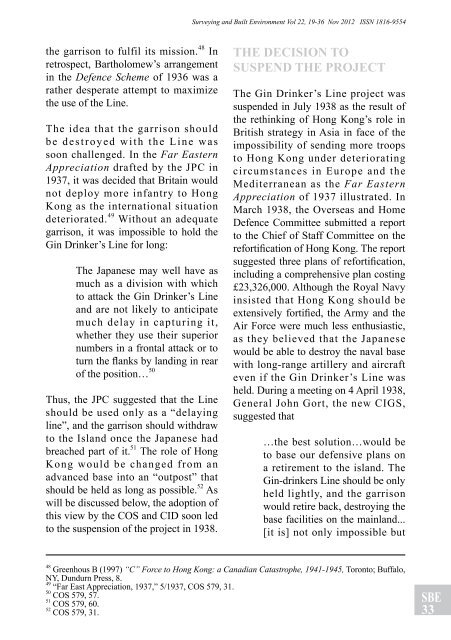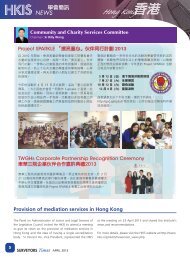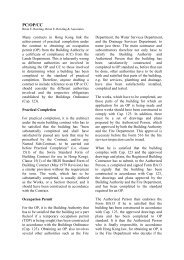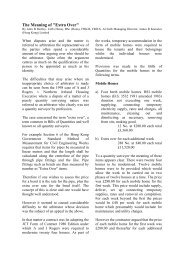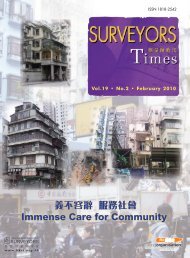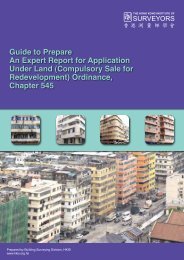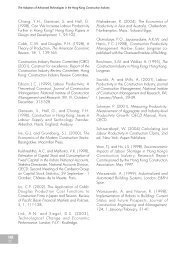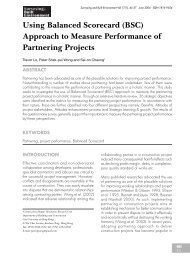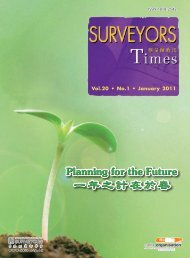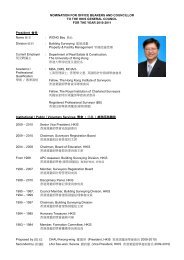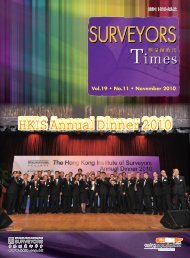Surveying & Built Environment Vol. 22 Issue 1 (December 2012)
Surveying & Built Environment Vol. 22 Issue 1 (December 2012)
Surveying & Built Environment Vol. 22 Issue 1 (December 2012)
Create successful ePaper yourself
Turn your PDF publications into a flip-book with our unique Google optimized e-Paper software.
the garrison to fulfil its mission. 48 In<br />
retrospect, Bartholomew’s arrangement<br />
in the Defence Scheme of 1936 was a<br />
rather desperate attempt to maximize<br />
the use of the Line.<br />
The idea that the garrison should<br />
be destroyed with the Line was<br />
soon challenged. In the Far Eastern<br />
Appreciation drafted by the JPC in<br />
1937, it was decided that Britain would<br />
not deploy more infantry to Hong<br />
Kong as the international situation<br />
deteriorated. 49 Without an adequate<br />
garrison, it was impossible to hold the<br />
Gin Drinker’s Line for long:<br />
The Japanese may well have as<br />
much as a division with which<br />
to attack the Gin Drinker’s Line<br />
and are not likely to anticipate<br />
much delay in capturing it,<br />
whether they use their superior<br />
numbers in a frontal attack or to<br />
turn the flanks by landing in rear<br />
of the position… 50<br />
Thus, the JPC suggested that the Line<br />
should be used only as a “delaying<br />
line”, and the garrison should withdraw<br />
to the Island once the Japanese had<br />
breached part of it. 51 The role of Hong<br />
Kong would be changed from an<br />
advanced base into an “outpost” that<br />
should be held as long as possible. 52 As<br />
will be discussed below, the adoption of<br />
this view by the COS and CID soon led<br />
to the suspension of the project in 1938.<br />
<strong>Surveying</strong> and <strong>Built</strong> <strong>Environment</strong> <strong>Vol</strong> <strong>22</strong>, 19-36 Nov <strong>2012</strong> ISSN 1816-9554<br />
THE dECISIoN To<br />
SuSpENd THE pRoJECT<br />
The Gin Drinker’s Line project was<br />
suspended in July 1938 as the result of<br />
the rethinking of Hong Kong’s role in<br />
British strategy in Asia in face of the<br />
impossibility of sending more troops<br />
to Hong Kong under deteriorating<br />
circumstances in Europe and the<br />
Mediterranean as the Far Eastern<br />
Appreciation of 1937 illustrated. In<br />
March 1938, the Overseas and Home<br />
Defence Committee submitted a report<br />
to the Chief of Staff Committee on the<br />
refortification of Hong Kong. The report<br />
suggested three plans of refortification,<br />
including a comprehensive plan costing<br />
£23,326,000. Although the Royal Navy<br />
insisted that Hong Kong should be<br />
extensively fortified, the Army and the<br />
Air Force were much less enthusiastic,<br />
as they believed that the Japanese<br />
would be able to destroy the naval base<br />
with long-range artillery and aircraft<br />
even if the Gin Drinker’s Line was<br />
held. During a meeting on 4 April 1938,<br />
General John Gort, the new CIGS,<br />
suggested that<br />
…the best solution…would be<br />
to base our defensive plans on<br />
a retirement to the island. The<br />
Gin-drinkers Line should be only<br />
held lightly, and the garrison<br />
would retire back, destroying the<br />
base facilities on the mainland...<br />
[it is] not only impossible but<br />
48<br />
Greenhous B (1997) “C” Force to Hong Kong: a Canadian Catastrophe, 1941-1945, Toronto; Buffalo,<br />
NY, Dundurn Press, 8.<br />
49<br />
“Far East Appreciation, 1937,” 5/1937, COS 579, 31.<br />
50<br />
COS 579, 57.<br />
51<br />
COS 579, 60.<br />
52<br />
COS 579, 31.<br />
SBE<br />
33


